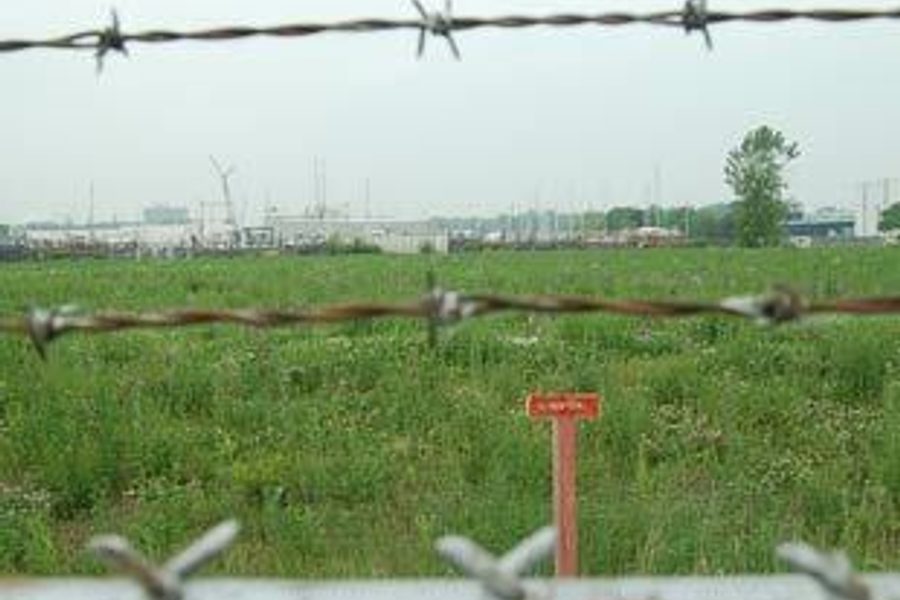The Not-So Superfund
Congress lets fund to hold companies responsible for cleaning up their pollution run dry
Chelsea Ross

About 40 miles north of Chicago, in Waukegan, Ill., a parcel of land sits between the Waukegan Harbor and the shore of Lake Michigan. Known as the Outboard Marine Corp. Superfund site, it’s where multiple companies – including General Motors, North Shore Gas and the Outboard Marine Corp. – dumped toxic waste for nearly a century. Although it’s been a superfund site for more than 20 years, much work remains to be done.
According to “Wasting Away,” a report published in April by the Center for Public Integrity (CPI), a D.C.-based public interest group, the Outboard Marine site is not alone. CPI found that under the Bush administration, the rate of Superfund site cleanup has been dramatically slower due to diminished funding. “Cleanup work was started at about 145 sites in the past six years,” it reads, “while the startup rate was nearly three times as high for the previous six years.”
In 1980, Congress passed the Comprehensive Environmental Response, Compensation, and Liability Act to make companies liable for pollution cleanup costs. The program, and its 1,304 designated sites, became commonly known as Superfund, after the large trust fund that held the taxes levied on polluting companies. This “super” fund helped pay for cleanups at orphan sites, those where potentially responsible parties either would not, or simply could not, pay.
“Superfund has always gone after companies that caused contamination,” says Bill Muno, who managed Superfund for the Great Lakes Region from 1995 to 2005. “But there used to be a surplus of money to pay for sites where companies were recalcitrant or bankrupt.”
However, in 1995, the Republican Congress refused to reauthorize the tax when it expired, and by 2003 the trust fund had evaporated. With the tax in place, 75 percent of funding came from polluter taxes and 25 percent came from government appropriations. Congress now appropriates 100 percent of general funds.
While the actual amount allocated to the program has varied little, Superfund has lost 35 percent of its funds due to inflation, which, according to Muno, has had a serious impact.
“When I was in the program, if we needed money, we would go to the fund and it was there,” says Muno. “Now there’s a backlog of projects that need money that outweighs what Congress appropriates.”
Mick Hans, who took over Muno’s position at the EPA, says that the rate of progress has slowed because “we took care of the low-hanging fruit first. The sites that are left are more complex and take longer to clean.”
Muno disagrees. “In the old days, we dealt with immediate threat and residual waste all at once. Now it takes much longer and often the EPA won’t fund the entire cleanup at once – they’ll just do a partial cleanups.”
That’s what happened at the Parson’s Casket Hardware site in Belvedere, Ill. A portion of the contaminated soil was removed in 1984, but rusty drums and tanks still sit in what is now a fenced-in field of tall grass and wildflowers. The groundwater is still contaminated, but since it does not infiltrate the community’s drinking water, the Parson’s site isn’t high on the list of cleanup priorities. It could take years to receive funds from Superfund.
In Waukegan, city and state officials aren’t waiting for Superfund to pay for the cleanup. Instead, they are working to secure a grant from an unrelated EPA program. But Waukegan’s situation is rare – most sites don’t have other options.
In 2004 and 2005, the EPA requested $150 million increases in the Superfund budget, but “Congress did not have any interest in increasing the funding,” says Betsy Sutherland, Superfund’s director of assessment and remediation.
Muno points to the amount of federal funding going to the Department of Defense to explain Congress’ budgeting decisions.
“What would help Superfund the most” says Muno, “would be to reinstate a corporate environmental tax, so some outside funds would contribute to the costs, but that’s not likely to happen under this administration.”








